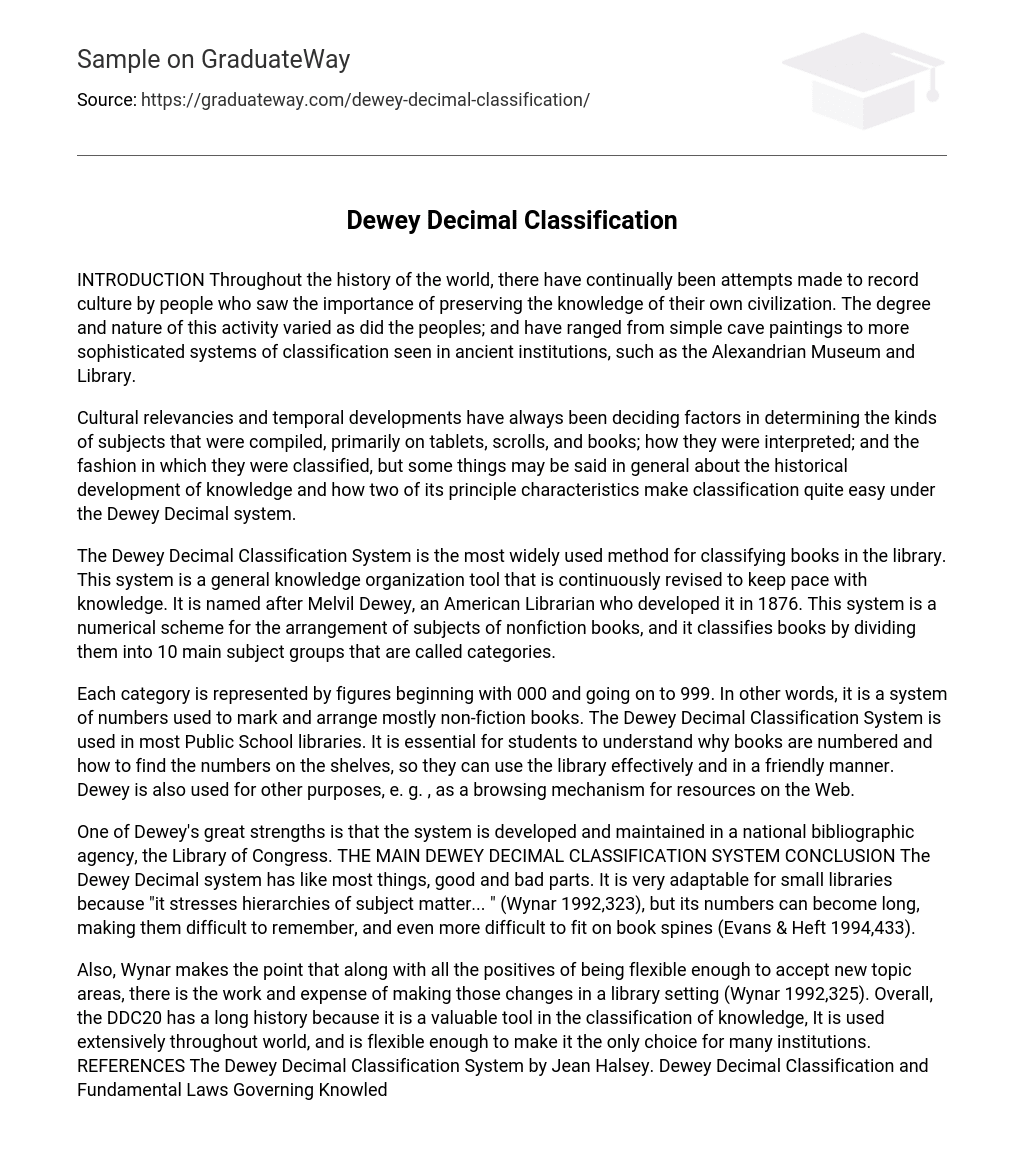Throughout history, people have made efforts to record their culture and preserve knowledge about their civilization. These endeavors have taken different forms and levels of complexity, ranging from cave paintings to advanced systems of classification found in ancient institutions like the Alexandrian Museum and Library.
The historical development of knowledge, including cultural relevancies and temporal developments, has always played a significant role in determining subject compilation on tablets, scrolls, and books. It also influences interpretation and classification methods. However, two key characteristics of knowledge facilitate effortless classification under the Dewey Decimal system.
The Dewey Decimal Classification System is a popular method used in libraries to organize and classify books. Developed by American librarian Melvil Dewey in 1876, this system is constantly updated to align with current knowledge. It categorizes nonfiction books into 10 main subject groups, known as categories, using a numerical scheme.
The Dewey Decimal Classification System is a numeric system used to mark and arrange various categories of books in libraries. These figures range from 000 to 999 and are primarily used for non-fiction books. Public school libraries rely on this system to organize their collections. It is crucial for students to comprehend the significance of book numbering and locating those numbers on shelves in order to effectively and comfortably navigate the library. Additionally, the Dewey Decimal Classification System is utilized for other purposes such as browsing online resources.
Developed and maintained by the Library of Congress, a national bibliographic agency, the Dewey Decimal system has both strengths and weaknesses. One of its strengths is its adaptability for small libraries as it emphasizes subject matter hierarchies. However, a drawback is that its lengthy numbers can be challenging to remember and fit on book spines.
According to Wynar (1992,325), while there are advantages to being adaptable and accepting new subject areas in a library, there is also the effort and cost involved in implementing these changes. In general, the DDC20 has a rich history as it is regarded as a valuable tool in knowledge classification. It is widely utilized globally and is often the preferred option for many institutions due to its flexibility. References: Jean Halsey’s “The Dewey Decimal Classification System” and “Dewey Decimal Classification and Fundamental Laws Governing Knowledge”.





